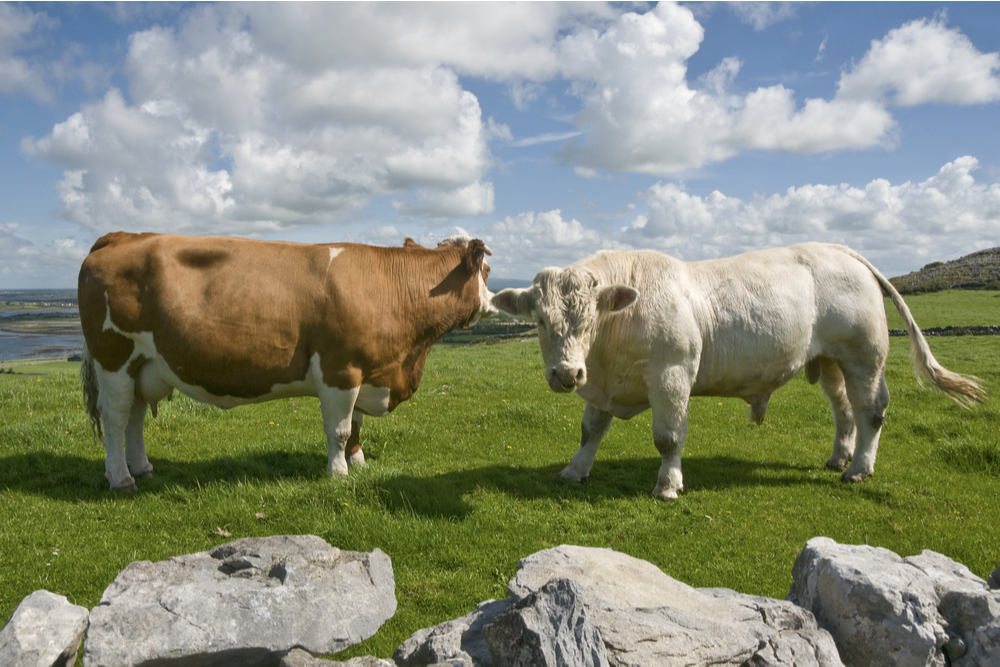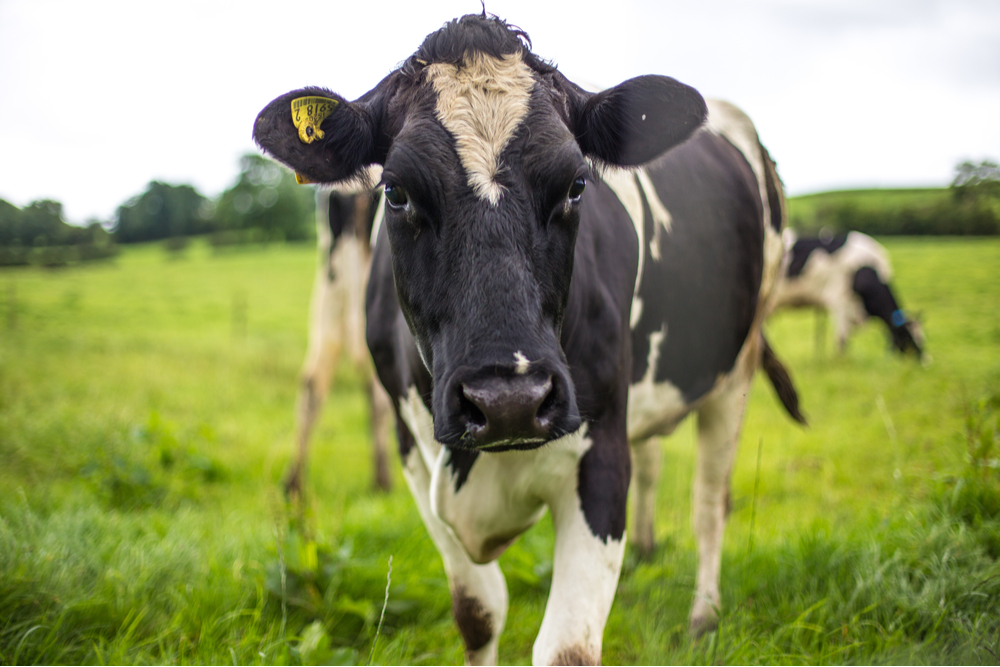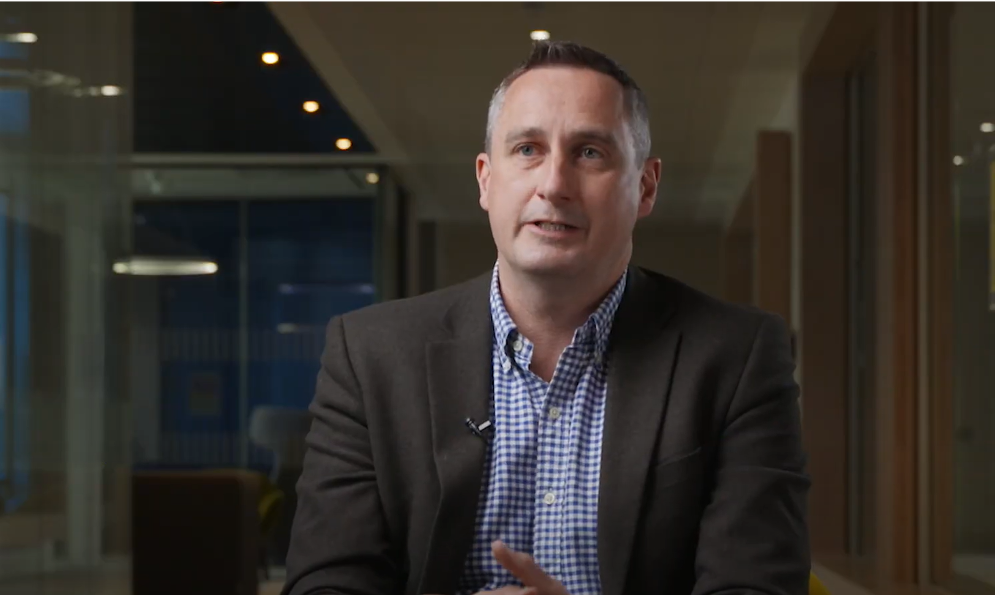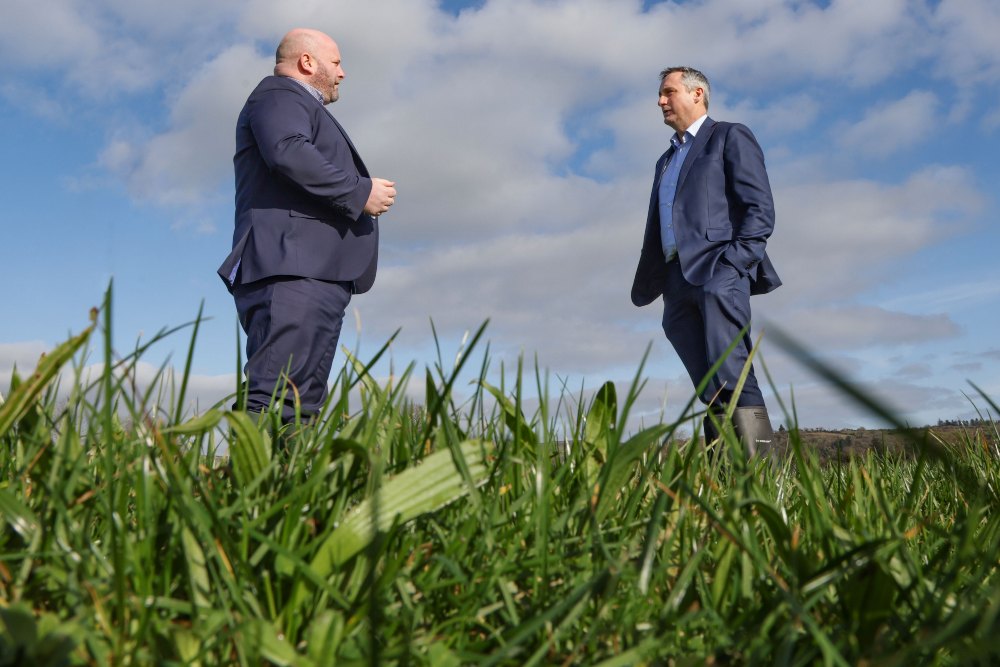Irish farmers are coming into 2023 in a strong state, with solid margins, positive cashflows and strengthened balance sheets, writes Bank of Ireland head of Agri Sector Eoin Lowry.
“If 2022 has taught us anything it is that price volatility is firmly back on the table across the main global commodities”
2022 Review
Summary: A sector delivering growth
2022 will be defined as a year that saw dramatic inflation in farm input prices coupled with record farm-gate prices across most agri commodities as a result of the war in Ukraine and Covid-19 related supply chain uncertainty. Despite the increased costs, the agri sector performed strongly in 2022. Overall, elevated agri commodity prices supported high input costs across feed, fertiliser and fuel. However, the severity of the impact of rising input prices varied by sector. For example, improved milk prices for dairy farmers offset increased input costs in 2022. While higher prices for pig farmers received from late summer were more than eroded by large feed and energy price increases during the year. Weather conditions during 2022 were largely favourable except for some dry summer months which put pressure on grassland systems in some areas. Overall, the sector performed strongly with profits up 30% overall (CSO).
Key Sector Trends in 2022
Agri commodities hit record high in 2022: The FAO Food Price Index (FFPI), which tracks international prices of globally traded agri-food commodities, rose 14% in 2022 – to the highest level since records began in 1990. The index had already increased 28% in 2021 as the world recovered from the impact of the pandemic and is now 46% higher than the 2020 level. The main food indices (cereals, meat and dairy) reached record highs in 2022. The Cereal Price Index increased 18% in 2022 due to market disruptions, higher energy and input costs, adverse weather and continued strong global food demand. The Dairy Price Index rose 20% in 2022 due primarily to robust global demand coupled with somewhat tighter supply, driven by adverse weather in key dairy production regions.
The Meat Price Index increased 10% in 2022, with chicken seeing the largest increases in prices (+19%) while pork and beef prices rose 7% respectively in 2022 compared to 2021.
Record prices deliver €2.5bn extra in farm output: Overall, it is estimated that the value of Agricultural Output will increase by €2.5bn (+26%) to €12.7bn in 2022 (CSO) with prices responsible for the majority of the increase. Cereal prices increased 53% and milk prices increased 46% during the year (CSO). Pig prices were up 43% and cattle prices increased 11% (CSO). Poultry prices increased 7%, while egg prices increased 30% during 2022 (CSO).
Inflation costs farmers €1.5bn in 2022: While farm gate prices increased 25% overall in 2022, they didn’t rise enough to completely offset input price rises of 33% (CSO). Most farm input prices rose, with fertiliser prices up 141%, energy prices up 39% and feed prices up 28% in 2022 compared with 2021 (CSO).
The overall increase in input costs (as opposed to prices) is estimated to be up by a quarter (+€1.5bn) to €7.7bn in 2022. Farmers spent an extra €1.2bn on feed and fertiliser in 2022 – split evenly between fertiliser (€0.6bn) and feed (€0.6bn). As a result of a trebling in fertiliser prices, volumes used fell by 19% resulting in the cost of fertiliser on farms doubling overall. The cost of feed rose by almost one third (+31%) with prices accounting for 28% of this increase.
Expenditure on energy rose by 42% (+€200m) to €0.6bn.
Farm profits increase by €1bn in 2022: The increase in the value of farm output outweighed the increased costs, and increased the sector’s operating surplus by €1.1bn (+30%) to reach €4.8bn in 2022(CSO). Average farm incomes are expected to be up 25% in 2022 compared to 2021 (Teagasc) with average dairy farm incomes estimated at €148,000, average tillage incomes at €64,000, average cattle rearing incomes at €9,000, average cattle finishing incomes at €17,000 and average sheep incomes at €20,000.
Agri-food exports up 22% in 2022: Irish food and drink exports increased 22% to €16.7bn in 2022. While the majority of the rise was as a result of rising commodity prices, beef and dairy export volumes increased by 9% and 5% respectively in 2022 relative to 2021 (Bord Bia).
Lending to sector at lowest level in 10 years: The sector continues to borrow less and deleverage each year. In 2022, new lending to farmers fell to the lowest level in 10 years. In the first 9 months of 2022, farmers took out €411m of new loans – 19% (€98m) lower than the same period in 2021 (Central Bank). At the same time, farmers continue to deleverage and pay down existing debt at a faster rate than taking out new debt. Outstanding debt on Irish farms continues to decline with €2.8bn of debt outstanding at end September 2022 (Central Bank).
Strong performance by Bank of Ireland in 2022: Bank of Ireland continues to grow its share of new lending to farmers in Ireland. In 2022, Bank of Ireland captured 55% of all new lending to farmers, demonstrating our commitment and appetite to support farmers in their business ambitions. Recognising the challenging environment facing farmers in 2022, Bank of Ireland launched a €100m Agri Assist loan fund, to support farmers dealing with the rapidly increasing cost of farm inputs. The fund provides additional working capital to farmers at competitive rates with extended repayment terms of up to 3 years.
Farmers face into 2023 in a strong position: In 2022, agricultural deposits continued the increase seen in 2021 (Central Bank). This increase is driven by two years of strong profits across the sector. Over the course of 2022, agri deposits with Bank of Ireland increased 28% and are now up 60% since the onset of Covid-19. Overdraft utilisation rates, another key indicator of financial health on farms continues to decrease, driven by the solid financial performance of the sector, delivering strong cashflows and increased cash reserves.
Sector Performance 2022
Dairy: Milk production, which has been rising every year for the past 10 years as a result of the lifting of milk quotas, stabilised in 2022. Despite marginally higher cow numbers compared to 2021, milk output volumes remained flat at 8.7bn litres in 2022 (CSO). A combination of poor grass growth in the peak production months coupled with reductions in fertiliser use limited the growth in milk output. Like other sectors, the dairy sector experienced a sharp increase in production costs in 2022 but record farm milk prices buffered the impact. Overall, average milk price for the year increased 46% to €0.60/L including VAT (actual fat and protein). Driven by higher direct costs, it is estimated that total production costs increased by 30% on a per litre basis (to an average of €0.35/L in 2022 (Teagasc). Average dairy farm incomes are estimated at €148,000 for 2022.
Beef: Cattle slaughterings increased c. 120,000 head or 7% to c.1.8m head in 2022 – the highest level in 23 years. In 2022, average prices for prime finished cattle were 16% higher than the average levels in 2021. The increased price of feed and fertiliser have contributed towards higher input costs on cattle farms. As a result, average margins on cattle finishing farms increased 7% while average margins on suckler farms decreased 15% in 2022 (Teagasc). Average cattle rearing incomes were €9,000 in 2022, while average cattle finishing incomes were €17,000 in 2022.
Tillage: Despite a 4% contraction in crop volumes in 2022, cereal output prices rose 53% in 2022, leading to overall crop output values increasing by 14% (CSO). Base cereal prices increased c. €100/T to €300/T at harvest as a result of reduced production levels in the EU market and uncertainty regarding Ukraine exports. However, direct costs for cereal production increased significantly in 2022, due mainly to an increase in fuel, fertiliser and seed expenditure. Whilst direct costs were higher in 2022, the increase in price more than covered any input price increases leading to margin expansion on tillage farms in 2022. Overall yields were up in the main cereal crops. On average, direct costs of production increased by 57% in 2022. In order to ensure adequate fodder for winter supplies, a €12m Tillage Incentive Scheme was launched by The Department of Agriculture, Food and the Marine to encourage the growing of tillage crops in 2022.
Sheep: The average mid-season lowland lamb farm margins were boosted by the receipt of payments from the Sheep Welfare Scheme. Total costs increased 28% more than eroding any output value gains. The gross margin for Irish mid-season lowland lamb producers in 2022 is estimated to have decreased by 14%. It is expected that the average lamb price in Ireland for 2022 for the year as a whole will be higher than in 2021. The year-on-year price change is estimated at 4% (CSO).
Pigs: 2022 was a very challenging year for pig farmers as rapidly rising production costs quickly outstripped any price rises. While pig prices averaged €1.82/kg in 2022 – an increase of 15% (23c/kg) compared to 2021 – average pig production costs were up 30% (Teagasc). The feed cost is estimated at €1.56/kg for 2022 compared to the 5 year average of €1.20/kg (Teagasc). The key pig production profitability measure, margin over feed, was 26 cent in 2022 (Teagasc) – the lowest level in almost 40 years and leaving the average pig farm in a loss making situation. In order to support the sector as a result of a challenging external environment, two separate packages worth €20m were put in place by the Department of Agriculture, Food and the Marine during the year.
Poultry: Across all the farm sectors, poultry is the only output where values are expected to fall in 2022. A 4% increase in prices was negated by a 5% reduction in output volumes, resulting in the value of poultry falling by 2% (-€3m) to €185m. Rising grain prices continued to erode margins, with price increases slow to come from market (CSO).
Land: While agricultural land prices rose 16% to €11,906 per acre in 2021 (Farmers Journal Land Report) it is expected that, on average, land prices will have increased a further 6% to over €12,000 per acre in 2022. However, some individual parcels are achieving prices well above the average– in excess of €20,000 in some cases. This continues to be driven by limited supply coupled with increased demand – particularly from dairy farmers against a backdrop of evolving nitrates regulations.
2023 Outlook
Summary:
Despite a backdrop of slower global economic growth, high inflation, higher interest rates and monetary policy tightening, Irish farmers are coming into 2023 in a strong state, with solid margins, positive cashflows and strengthened balance sheets. Higher input costs are somewhat baked into farms in the short term at least – and likely to remain high for 2023. The evolution of the war in Ukraine and weather will be key determinants as to price levels across key inputs such as fertiliser and feed in 2023. Inflation across the wider economy will also put pressure on other key agri inputs used on farms. The outlook for agri commodities appears calmer than it was 12 months ago with overall farm gate prices expected to decline in 2023 – but still remain above pre-pandemic levels. While margins will tighten in the short term, the long term outlook for the sector remains positive. Given the increased focus at national and EU level on the environmental footprint of farms, the sector has a significant challenge ahead. Policy clarity, a supportive eco-system, and innovation will enable the sector reach its ambition.
Key Sector Trends in in 2023:
Calmer outlook on global agri commodities: Recent declines in the FAO agri commodity index puts it now slightly under levels seen one year ago mainly driven by demand side factors as a result of a slowdown in global growth. However, a combination of supply-side factors including trade restrictions, unfavourable weather, high energy prices, the war in Ukraine, and low interest rates which have helped keep global food prices rising between 2020 and 2022, could outweigh weakening demand for food commodities, keeping prices high in the next few quarters.
Tight fertiliser supplies keep prices high in near term: As a result of continued closures across several European fertiliser manufacturers, fertiliser is in continued tight supply. Even though gas prices have reduced and this is enabling EU fertiliser production to come back on stream, it is unlikely to rebuild stock levels in time for this season. Therefore it is expected that fertiliser prices will remain higher than long term averages in the first half of 2023. The lower levels of application (-20%) in 2023 are expected to remain.
Farm profits to shrink by €1.5bn in 2023: We are forecasting a drop in overall farm profits in 2023 compared to 2022, as a direct result of falling farm output prices coupled with sustained elevated input prices. Taking the sector as a whole we expect output to fall by c. €1.5bn (-12%) in 2023, input costs to remain largely similar, therefore reflecting a €1.5bn shrinkage in overall operating surplus for 2023. This would see overall profits for the sector fall back to pre-pandemic levels but still ahead of long term average levels.
Outlook will vary across sectors: Despite weakening global dairy markets and lower milk prices, the outlook for dairy remains positive. Milk prices are estimated to fall by c.10c average over the course of the year but still remain above long term average levels. Margins are expected to tighten as fertiliser and energy prices remain elevated. Prospects for finished cattle prices are positive as a result of stronger demand and tighter supplies. Once higher costs of production are taken into account, margins on cattle farms are expected to be similar to 2023. The outlook for cereal prices is weakening since the start of the year, with forward prices for next harvest currently similar to levels seen in 2021. Once higher costs are factored in and assuming similar levels of yield, margins on tillage farms look set to narrow from the relative highs of 2022. Pig prices are forecast to increase in 2023. While feed costs look set to remain elevated, the pig sector is expected to experience improved margins in 2023, with a return to overall profitability for the full year.
Heightened volatility and Agflation: If 2022 has taught us anything it is that price volatility is firmly back on the table across the main global commodities. Reminiscent of the 2008 peaks it is too early to say if agri commodities are at a sustained new level due to rising demand and contracting supply – particularly due to increased environmental regulations. We are now in a period of Agflation – where food prices rise more rapidly than the prices of other goods and services. How this impacts demand across meat, dairy and grain products is yet to be determined as consumers face spending an increased portion of their incomes on feeding themselves.
Ambitious targets to reduce environmental footprint: Whether it is water quality, global warming or biodiversity, the environmental footprint of primary producers is attracting increased focus nationally, at EU level and globally. As a sector of national importance, there is an acceptance across the industry that it must embrace the challenge. While there is clarity and a roadmap with regards to reducing its greenhouse gas emissions, there is less clarity on how the sector will address water quality and biodiversity targets. This inherently increases risk to the sector and to individual farmers businesses.






